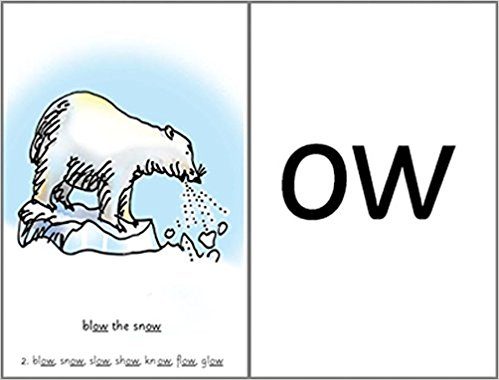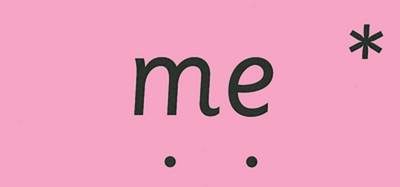
At Deerpark Primary School one of the methods we use to teach our younger children to read and write is the Read Write Inc phonics programme. Read Write Inc is a phonic based approach to teaching reading. Children first learn how to read sounds and then how to blend the sounds together to read words.
Children learn 44 sounds (speed sounds). At first, children learn the letter sounds and not the letter names. The speed sounds are taught in 3 sets. Set 1 contains all of the initial letter sounds plus a few common diagraphs (2 letters, 1 sound). In Set 2 children encounter more “special friends” or diagraphs sounds that are made up of two or three letters. In Set 3, children encounter different ways of representing the same sound e.g. ee as in tree and ea as in tea.

In Set 1 the speed sounds are taught in small groups. Once the children knows all of the sounds in one group, they move on to orally blending the sounds in that group to read words.
The order in which sounds are taught is as follows:
SET 1
m a s d t
i n p g o
c k u b
f e l h sh
r j v y w
th z ch qu x ng nk
In Set 1 the speed sounds are taught in small groups (as above). Once children know all of the sounds in one group, they move on to orally blending the sounds in that group to read words e.g. once they can read the first 5 sounds they can start to read words that include these sounds such as mat mad sat sad at etc. Once children know the next 5 sounds they can begin to read words containing a combination of the 10 known sounds and so on.
SET 2
ay ee igh ow oo ar or air ir ou oy
Set 2 and 3 sounds are represented by a simple picture prompt linked to the speed sound and a short phrase to enable recall e.g. ay = may I play. Each speed sound has a list of green words (words that can be sounded out) linked to it to allow children to practice reading words containing the new speed sound they have just learned.

The tables below provide you with associated phrases and examples of green words for each of the Set 2 and Set 3 sounds.
| SOUND | PHRASE | GREEN WORDS |
| ay | ay: may I play? | day, may, say, spray |
| ee | ee: what can you see? | sleep, need, green, feel |
| igh | igh: fly high | night, light, fright, might |
| ow | ow: blow the snow | snow, show, blow, flow |
| oo | oo: poo at the zoo | moon, spoon, pool, mood |
| ar | ar: start the car | bar, park, car, spark |
| or | or: shut the door | sort, short, horse, sport |
| air | air: that’s not fair | fair, stair, hair, chair |
| ir | ir: whirl and twirl | girl, whirl, twirl, dirt |
| ou | ou: shout it out | round, found, loud, shout |
| oy | oy: toy for a boy | boy, toy, enjoy |
SET 3
a-e ea i-e o-e u-e aw are ur ow oi ai e oa ew er ire ear ure
| SOUND | PHRASE | GREEN WORDS |
| a-e | a-e: make a cake | name, same, save, brave |
| ea | ea: cup of tea | neat, real, clean, dream |
| i-e | i-e: nice smile | hide, shine, white, wide |
| o-e | o-e: phone home | hope, home, rose, spoke |
| u-e | u-e: huge brute | tune, rude, use, June |
| aw | aw: yawn at dawn | saw, raw, straw, crawl |
| are | are: care and share | bare, spare, square, flare |
| ur | ur: nurse with a purse | burn, turn, burp, slurp |
| ow | ow: brown cow | howl, down, brown, gown |
| oi | oi: spoil the boy | join, coin, noise, voice |
| ai | ai: snail in the rain | paint, train, rain, plain |
| e | e: he me she we | he, me, we, be |
| oa | oa: goat in a boat | toad, road, oak, throat |
| ew | ew: chew the stew | knew, flew, blew, crew |
| er | er: better letter | over, never, hamster, after |
| ire | ire: fire fire | spire, bonfire, inspire, hire |
| ear | ear: hear with your ear | fear, dear, gear, spear |
| ure | ure: sure it’s pure | picture, mixture, adventure, |
TEACHING SOUNDS
PURE SOUNDS
When using the sounds with your child it is important not to add an “uh” to the end of the sound e.g. mmm not muh. This can be tricky to start with. Pure sounds make it much easier to start to blend sounds together to make words. It is much easier to hear the word mat when saying mmm – a – t than it is when saying muh – a – tuh. A video showing the correct pronunciation of the sounds can be found here.
BOUNCY AND STRETCHY SOUNDS
To help children remember their sounds we say that some make a stretchy sound and some make a bouncy sound. Stretchy sounds are said in one continuous sound, e.g. mmmmmmmmmm as in mountain. Bouncy sounds are said with a short sharp gap between, e.g. d-d-d– as in d-d-d dinosaur.
SOUND BLENDING
Children are ready to sound blend once they have learned the first set of sounds and can say these in and out of order. Read Write Inc calls this Fred Talk. Fred Talk involves reading the sounds within a word, for example, c-a-t and then blending them together to read the word, e.g. c-a-t -cat; sh-o-p -shop; s-t-r-ee-t -street. Children are encouraged to identify any diagraphs (“special friends”) contained within the word before sounding out the word.
GREEN WORDS
Green words are words that your child will be able to sound out and then blend together, using the speed sounds they have learned.

RED WORDS

Red words are those words which contain spelling patterns that cannot be sounded out. Some of the most frequently used words in the English language have an uncommon spelling pattern and don’t sound like they look, for example, said sounds like ‘sed’. Red words have to be learned by sight. These words are printed in red in the story books. Red words are introduced gradually as they are encountered in the story books. Your child’s teacher will be able to tell you which red words have been covered in class. If you would like to practise reading red words with your child at home, a list of red words is provided below.
Remember, red words can not be sounded out.
I of my to the no your said
you he are me go baby paint all
like I’ve want call we be her are
she washing some there so what they do
want old was one saw some watch by
watches school small wall who tall brother I’m
their walk fall were other two could son
would anyone over does through once here why
you’re humans whole should come many another any
mother father water great above where someone
Further information for parents is available on the Read Write Inc website.

